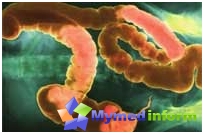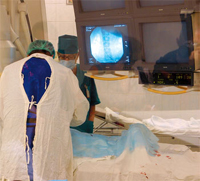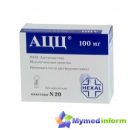Paralytic intestinal obstruction is always a secondary disease and occurs on the background of postoperative stress, pancreatitis, bile or renal colic. Treatment of paralytic intestinal obstruction aims to eliminate the main reason that caused disruption of the passage of food.
Content
Causes of the development of paralytic intestinal obstruction
 Paralytic intestinal obstruction develops as a result of infectious-toxic effects, which leads to a violation of the content of electrolytes in serum, which are so important for the body or a decrease in blood flow velocity in the intestine wall. Infectious-toxic reasons for the development of paralytic intestinal obstruction, in most cases are peritonitis, pneumonia, uremia (increased blood content in urates as a result of impaired uric acid removal), acidosis (displacement of acid-base), diabetes, porphyrin disease and poisoning Morphy. Reflex factors that can lead to paralytic intestinal obstruction:
Paralytic intestinal obstruction develops as a result of infectious-toxic effects, which leads to a violation of the content of electrolytes in serum, which are so important for the body or a decrease in blood flow velocity in the intestine wall. Infectious-toxic reasons for the development of paralytic intestinal obstruction, in most cases are peritonitis, pneumonia, uremia (increased blood content in urates as a result of impaired uric acid removal), acidosis (displacement of acid-base), diabetes, porphyrin disease and poisoning Morphy. Reflex factors that can lead to paralytic intestinal obstruction:
- Postoperative stress
- bile and renal colic
- Pancreatitis
- twisted ovaries, large gland
- An injury of abdominal organs and retroperitoneal space
- Myocardial infarction
Neurogenic causes are spinal dry tok, siringomyelia, slimming, spinal cord injury. Moogenic intestinal paresis is a consequence of avitaminosis, hypoproteinemia (decrease in protein content), hypokalemia (decrease in the concentration of potassium in serum), hypomagnalionia (decrease in magnesium level), blood flow level in the intestine wall with portal hypertension, heart failure, thrombosis and embolism of mesenteric vessels. The special form of unclear genes, affecting a hazelnaya intestine, is called pseudo-structures (there are basic manifestations of obstruction, but even during operation obstacles to passing intestinal contents do not detect).
Symptoms of paralytic obstruction
In paralytic obstruction, patients are presented with complaints for constant stupid painting pain in the stomach, which periodically enhances the type of bouts, nausea, vomiting congestive content. Language due to dehydration with vomiting dry, covered with a white rode. The belly is relatively mild, go off.
When palpation marked the abdominal wall pain in all departments without symptoms, which would point out peritonean irritation. With auscultation - the complete absence of intestinal noise, cardiac tones and respiratory noises are well carried out. With the x-ray study of the abdominal bodies, pneumatosis and multiple fine - and plumatic levels are determined, which reliably confirm the diagnosis of paralytic intestinal obstruction. Characterized by blood changes - an increase in leukocyte levels (leukocytosis). When stimulating the intestinal activity there is no effect.
Treatment of paralytic intestinal obstruction
Paralytic intestinal obstruction always carries the secondary nature of the disease. That is why the basis of the treatment of the disease is aimed at eliminating the root cause - the removal of the focus of infection (appendectomy, the stitching of the probulous ulcer, etc.).
With reflex and toxic intestinal obstruction - eliminating the sources of irritation to the conservative way, t. E. Drug blockade of all depressants intestinal peridaltics pulses by peridural, paravertebral blockade. Next, the stimulation of the intestinal activity is shown by administering Reomakodeks, potassium chloride, 20% sodium chloride solution, prozerne, complimine, aceclidine, ulitida, siphonnemes. All these funds are set to reflex reinforcement of intestinal peristals.
The patient is necessary to introduce a gastric probe, better probe type Miller-Ebot for aspiration of gastric or intestinal content. If the specified measures do not give effect and the danger of the development of shock due to a decrease in the volume of circulating blood and hypoxia (oxygen starvation) due to the high standing of the diaphragm, the emergency operation is shown - laparotomy (incision of the abdominal cavity) with a nashastric intubation of the entire small intestine and the subsequent treatment of violated exchange Processes.









